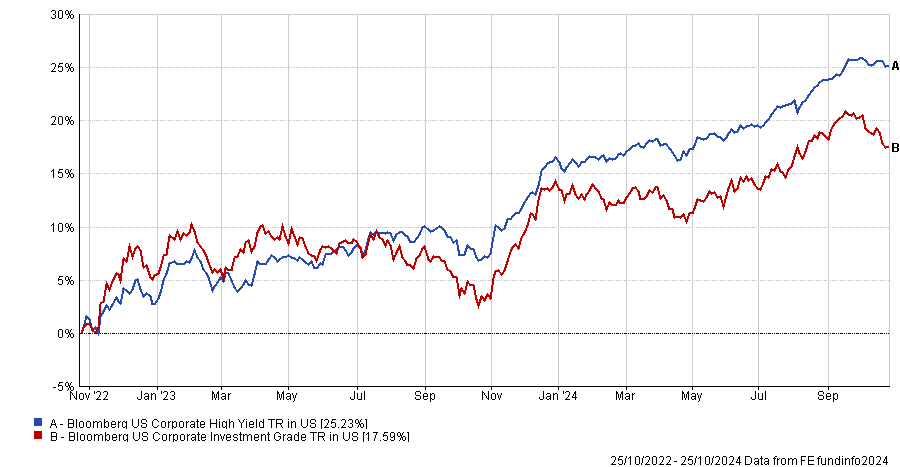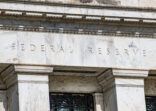Despite tight credit spreads, investors are starting to take an interest in US high yield bond strategies as they cave-in to the surprising resilience of the US economy.
AXA IM’s US high yield portfolio manager Robert Houle told FSA in an interview that clients’ interest in high yield strategies is starting to pick up as they acknowledge the US economy has fared better than expected.
A year ago, investors were convinced that the rapid interest rate hikes would cause an inevitable slowdown of the US economy. But with a soft landing now in sight and financial conditions for borrowers set to ease, the high yields on offer are starting to attract capital.
“We’ve seen more interest in a number of our strategies recently, and I think it’s driven by the acknowledgement of the strength of the US economy,” Houle said. “And that makes investors feel better about the fundamentals of high yield.”
He added: “The combination of the Fed that’s willing to adjust interest rates to make sure that they’re not too restrictive for too long, with a US economy that continues to grow at a healthy level, creates a very supportive environment for risk assets like US high yield.”
During the past two years, US high yield bonds have outperformed investment grade bonds.

One thing that has held some investors back from US high yield however, is tight spreads. Some prefer to wait until spreads widen before entering the asset class.
However, Houle said that looking at historical averages for US high yield credit spreads can be misleading because of how the constituents have evolved over time.
“In high yield, the spread is compensating for the expected loss from defaults, and since we expect defaults and the related loss to be relatively low – the tighter spread levels on an historical basis are somewhat justified,” he said.
“The asset class right now is much higher quality than it has been in past cycles. So it’s not a completely fair comparison to look at the asset class now versus many years prior.”
He added that the relatively strong US economy will also be supportive for companies as they continue to grow their cash flows and keep defaults down.
Within AXA IM’s high yield strategies, there is an overweight to the services sector and the technology sector, via software names in particular.
Houle said: “The types of issuers that we like to invest in have predictable business models that you can project in a financial model; they tend to have sticky, embedded business models with high switching costs for their customers, high margins, and good free cash flow generation.”
“We tend to be underweight some of the more cyclical, commodity-driven, basic industry type of exposures within the market that are much less projectable and much more driven by changes in commodity prices.”
Another concern for US high yield investors is the potential impact of the US election, where Houle admits there are some risks looming.
“Over the intermediate term, you could see an impact from some of the proposed trade policies, including higher tariffs, as well as immigration policy and changes in tax rates, and those could certainly result in meaningful changes to the US economy and its outlook,” he said.
“High yield spreads are very responsive to changes in the probability of a recession and changes in the outlook for future defaults,” he explained.
“So if something were to materially change the outlook for the US economic growth or defaults in the US, then that could have a pretty direct impact on US high yield valuations.”

















